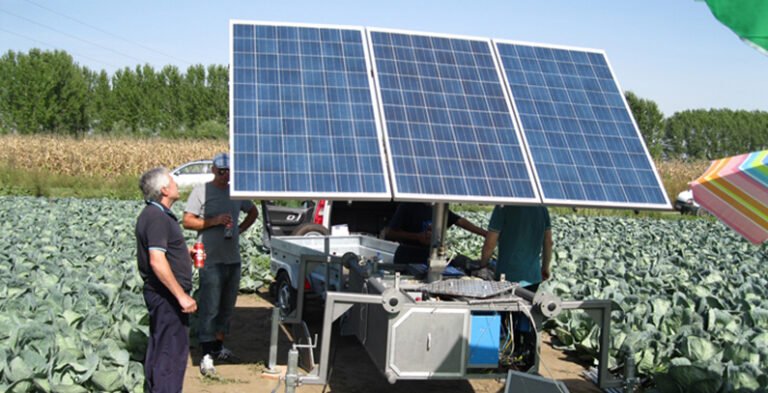Solar power generators are revolutionizing the way we think about energy. Whether you’re looking for a way to power your home during outages, reduce your carbon footprint, or stay connected during your camping trips, these versatile devices can meet your needs. This blog will take you through the essentials of solar power generators, providing you with the knowledge you need to make an informed choice. From how they work to choosing the right one, we’ve got you covered.
Benefits of Solar Power Generators
Solar power generators offer several benefits over traditional fuel-based or even grid-connected energy sources, including:
- Environmental Impact: Solar generators use clean, renewable energy, which reduces greenhouse gas emissions and dependence on fossil fuels.
- Cost Efficiency: While the initial investment may be higher, operational costs are minimal since sunlight is free.
- Versatility: From everyday home use to emergency backup power during natural disasters, solar generators can fulfill a range of energy needs.
- Quiet Operation: Unlike noisy gas generators, solar generators operate silently, making them ideal for residential neighborhoods or serene camping environments.
How Do Solar Power Generators Work?
At their core, solar power generators harness the sun’s energy and convert it into usable electricity. Here’s a breakdown of the components:
1. Solar Panels
These capture sunlight and convert it into direct current (DC) electricity through photovoltaic (PV) cells.
2. Battery Storage
The electricity generated is stored in a built-in battery so that it’s available even when the sun isn’t shining.
3. Charge Controller
This smart component regulates the power stored to prevent the battery from overcharging or becoming depleted.
4. Power Inverter
Solar generators use inverters to convert DC electricity into alternating current (AC), which is the standard power format in most homes and appliances.
Types of Solar Power Generators
Solar generators come in various forms, each tailored to specific needs:
1. Portable Solar Generators
- Perfect for campers, RVers, and outdoor enthusiasts.
- Small, lightweight, and easy to transport.
- Generate enough power for LED lights, phones, laptops, or small appliances.
2. Home Backup Generators
- Designed to power multiple devices or essential home functions during outages.
- Larger capacity makes them suitable for refrigerators, fans, and medical devices.
3. Commercial Solar Generators
- High-capacity systems tailored for industrial or commercial use.
- Provide continuous, large-scale energy output.
Choosing the Right Solar Power Generator
When selecting a solar power generator, evaluating your specific needs is crucial:
- Power Capacity
-
- Measured in watt-hours (Wh), this determines how much energy the generator can store and supply.
- Consider your typical power usage to choose the right capacity.
- Portability
-
- For on-the-go use, look for lightweight, compact designs.
- Budget
-
- Entry-level models start at a few hundred dollars, while high-capacity options may cost thousands.
- Expandability
-
- Some solar generators give you the option to add extra panels or storage for greater flexibility.
Top Solar Power Generators on the Market
Here are some of the most popular solar power generators worth considering:
- Jackery Explorer 1500
-
- Ideal for small home appliances and outdoor adventures.
- Features a durable design and a user-friendly LCD screen.
- Goal Zero Yeti 3000X
-
- A powerful option suitable for home backup or heavy-duty gadgets.
- Easily expandable with additional solar panels.
- Bluetti AC200P
-
- Affordable yet robust with high power output and multiple AC/DC outlets.
DIY Solar Generator Projects
Feeling handy? Building your own solar generator can be a rewarding project. Here’s a simplified guide:
Materials Needed:
- Solar panels
- Deep-cycle batteries
- Charge controller
- Power inverter
- Wiring and connectors
Steps:
- Connect Solar Panels to the charge controller to begin storing energy.
- Attach Batteries to store the electricity generated.
- Connect the Power Inverter to convert energy to AC for your appliances.
Safety Tip: Always wear insulated gloves and follow electrical safety guidelines when working with wiring.
Maintaining Your Solar Generator
Like any piece of technology, proper maintenance ensures a long lifespan for your solar generator:
- Clean Solar Panels regularly to maximize efficiency.
- Inspect Wiring for damage or loose connections.
- Store Properly – Keep the generator dry and avoid extended exposure to extreme heat or cold.
- Test Periodically to ensure all components are functioning correctly.
Solar Power Generators and Cost Analysis
While a basic setup can cost anywhere from $500 to $3000 or more, they offer significant savings in the long run. Consider the following:
- Over 5 years, using solar power instead of a gas generator could save you hundreds in fuel costs.
- Government subsidies and tax incentives can reduce upfront costs.
The Future of Solar Power Generators
Innovations in solar technology continue to push the boundaries of what’s possible. Recent trends include:
- Eco-Friendly Batteries: Non-lithium alternatives are emerging, reducing environmental impact further.
- Higher Efficiency Panels: New photovoltaics are capturing and converting more sunlight into electricity.
- Smart Monitoring Systems: Future solar generators may include IoT integrations for real-time monitoring and adjustments.
Powering a Sustainable Future
Solar power generators are no longer just a luxury; they are an investment in a more resilient, sustainable future. Whether you’re looking for a reliable backup system for your home, a portable generator for your next adventure, or a commercial-grade solution, there’s a solar generator for every need.
Choosing to go solar isn’t just about convenience; it’s a commitment to cleaner energy and a healthier planet. Explore your options, invest wisely, and experience the revolution of renewable energy.
